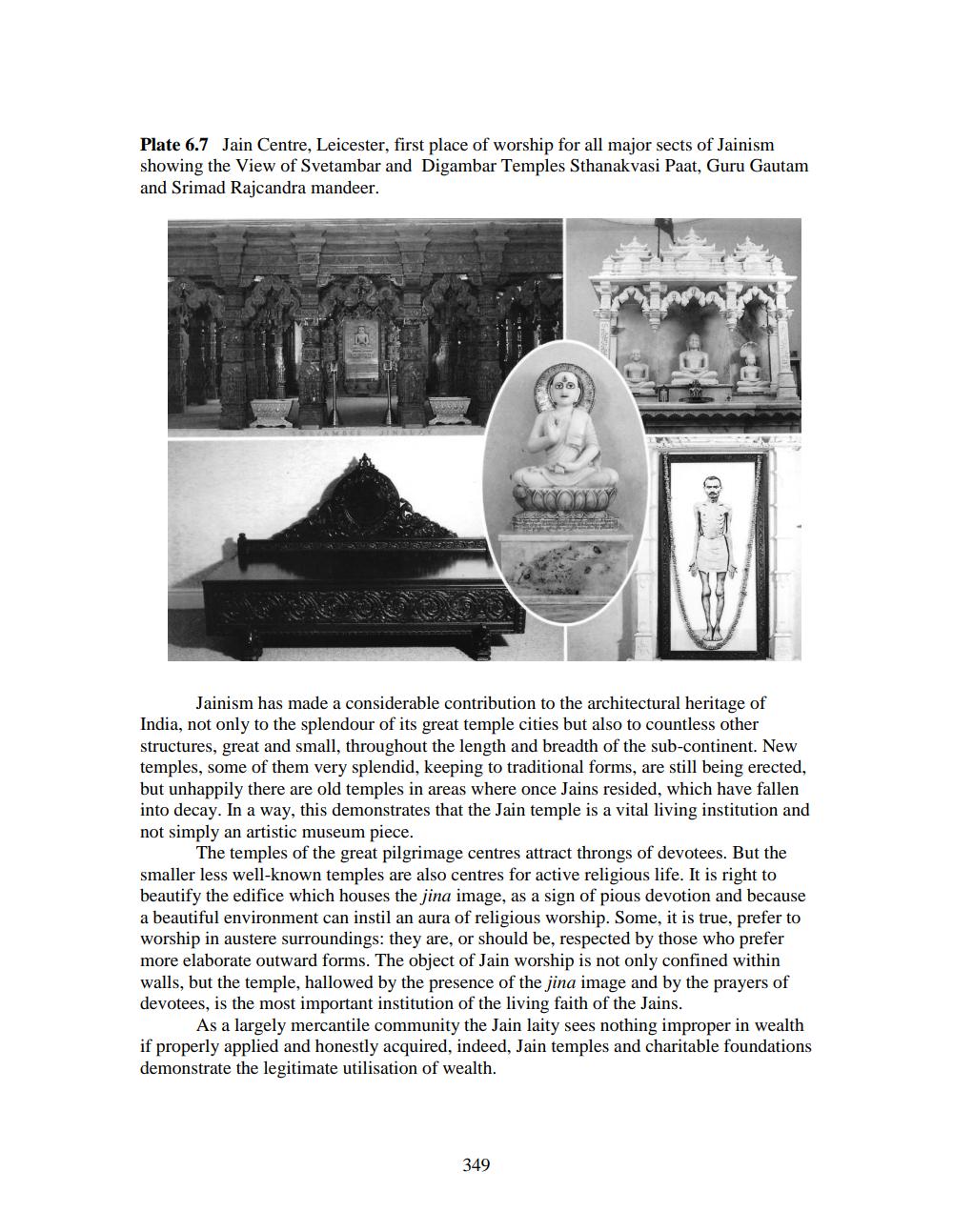________________
Plate 6.7 Jain Centre, Leicester, first place of worship for all major sects of Jainism showing the View of Svetambar and Digambar Temples Sthanakvasi Paat, Guru Gautam and Srimad Rajcandra mandeer.
Jainism has made a considerable contribution to the architectural heritage of India, not only to the splendour of its great temple cities but also to countless other structures, great and small, throughout the length and breadth of the sub-continent. New temples, some of them very splendid, keeping to traditional forms, are still being erected, but unhappily there are old temples in areas where once Jains resided, which have fallen into decay. In a way, this demonstrates that the Jain temple is a vital living institution and not simply an artistic museum piece.
The temples of the great pilgrimage centres attract throngs of devotees. But the smaller less well-known temples are also centres for active religious life. It is right to beautify the edifice which houses the jina image, as a sign of pious devotion and because a beautiful environment can instil an aura of religious worship. Some, it is true, prefer to worship in austere surroundings: they are, or should be, respected by those who prefer more elaborate outward forms. The object of Jain worship is not only confined within walls, but the temple, hallowed by the presence of the jina image and by the prayers of devotees, is the most important institution of the living faith of the Jains.
As a largely mercantile community the Jain laity sees nothing improper in wealth if properly applied and honestly acquired, indeed, Jain temples and charitable foundations demonstrate the legitimate utilisation of wealth.
349




